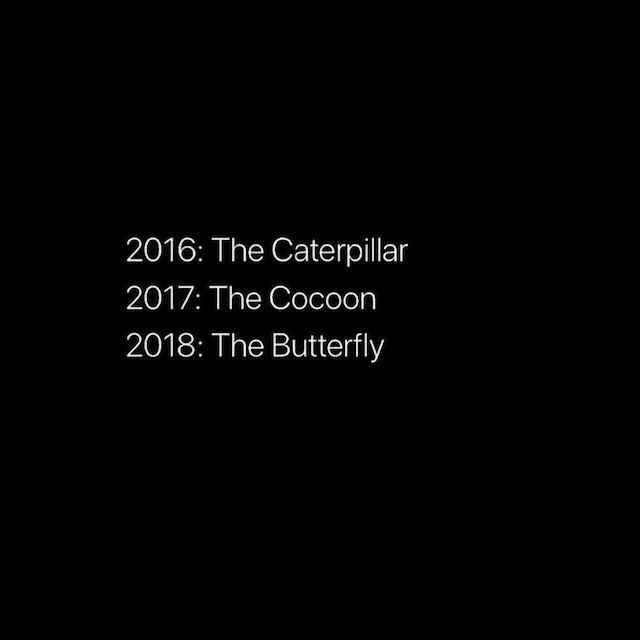Lately, I’ve been thinking a lot about how we write the story of our lives.
While we are shaped by outside events and circumstances (such as our family, our parents’ DNA, and our culture) throughout our lives, this external influence is only part of our story.
The other part is based on self-definition. Each day, we have the chance to create ourselves through the choices we make, the efforts we take, and the attitudes we adopt.
The issue of fate versus free will has been hotly debated for millennia: material for said debate ranges from the ancient Greek tragedian Sophocles’ work Antigone, to Shakespeare’s Macbeth, to panels of experts in modern neuroscience and philosophy.
While this philosophical question will likely occupy us humans for a long time to come, it seems obvious to me on a more concrete level that the story of our lives is truly co-written, both by us and the forces outside of us.
While we can always choose to set goals and define ourselves, for many of us the transition between years is a natural time to focus on who we would like to become going forward. As writer Melody Beattie put it: “The new year stands before us, like a chapter in a book, waiting to be written. We can help write that story by setting goals.”
But how do we decide which stories are worth telling in the year ahead? In other words, how do we decide which New Year’s resolutions, intentions, or goals are worth pursuing?
Here are three tests that I have found particularly helpful in making that call:
1. Find out if your New Year’s resolution passes the “Yes, Yes, Hell No” test.
The “Yes, Yes, Hell No” framework was developed by Executive Coach Dr. Brian Whetten. It is based on the understanding that we have three main perspectives that we need to consider when evaluating the merit of our goals: the perspective of our intuition, our reason, and our fear.
What makes an evaluation of our goals challenging is that these three perspectives can be in conflict. For instance, let’s assume somebody was considering taking up ballroom dancing in the next year. While they might light up around this idea (indicating that their intuition is on board with this idea), their fear may lead them to come up with a number of reasons why pursuing this goal would be a terrible idea (What if you don’t find a dance partner? What if you injure yourself? What if you have too much work to do?).
For the purposes of testing the worthiness of our New Year’s resolutions, the best goals will be those that receive a “Yes, Yes, Hell No” response:
>> Your intuition lights up around it (the first “yes”)
>> Your reason thinks that pursuing this goal makes logical sense, which may include evaluating it against the SMART criteria for goals (the second “yes”)
>> Your fear tells you to run the other way (the “hell no”)
“Yes, Yes, Hell No” goals are amazing because they are aligned with what we care about and help us to grow by stretching us out of our comfort zone—all while making sense from a rational point of view.
You can read more about this framework in my article here.
2. Find out if your New Year’s Resolution passes the “triple bottom line” test.
The “triple bottom line” is a concept that I first heard from author and speaker Dawn Clark. It posits that there are three levels to keep in mind when we evaluate the auspiciousness of a goal—the impact of the goal on us, those around us, and the world at large. Just like any other goal, an outstanding New Year’s resolution will be linked to an outcome that is:
>> Good for you (“I”)
>> Good for those around you (“Us”)
>> Good for the world (“All of Us”)
Because the triple bottom line framework encourages us to look at these three different levels, it can help make our goals more balanced.
By keeping both interests of the individual and the (smaller and larger) whole in mind, we ensure that we neither choose resolutions that are good for those around us but not good for us (I will always cook dinner for my partner, no matter how tired I feel), nor pursue goals for merely egotistical reasons (I will finally run a marathon just so that I can look down on everyone else who hasn’t).
To be precise, the triple bottom line is often more about our motivation for something than it is about the goal itself.
To give you an example, let’s assume someone’s New Year’s resolution was to read three books per month. While at first glance this might seem like a commendable intention, whether or not this is a worthy resolution would actually depend entirely on this person’s motivation for doing so. If they wanted to read them to broaden their horizon, share the information with interested people around them, and use it to inform their actions in the world, pursuing this goal would be good for the person, those around them, and the world.
In contrast, if they wanted to read more to consistently escape reality, show off one’s newly acquired knowledge in a condescending way, or learn how to get away with doing unethical things, it would be a bad New Year’s resolution.
3. Find out if your New Year’s resolution passes the “Willing to make it happen?” test.
Once you’ve found a New Year’s resolution that is both a “Yes, Yes, Hell No” and a “triple bottom line” goal, the remaining question is if you are willing to do what it takes to make it happen. You can even rank your commitment to that goal on a scale of 1 (not interested in pursuing this) to 10 (whatever it takes to make this happen).
If you come up with a low number (under 7), I would recommend either scrapping the New Year’s resolution altogether or find a way to increase your level of commitment to it. A New Year’s resolution without sufficient commitment on our part is but a wish—and I personally think our energy is better spent elsewhere than on personal goals we don’t care enough about to make happen.
Realizing that something is just not important enough for us to pursue wholeheartedly often brings a clarity that can feel incredibly freeing. Scrapping a New Year’s resolution that doesn’t excite us can give us the space to find one that truly does feel worth our investment.
Sometimes, we can be committed to a goal, but it can feel challenging to accomplish it by ourselves. If this happens to you, it doesn’t mean there’s something wrong with you or your goals. To the contrary, it often happens when we choose goals that are really a stretch for us—which is common for “Yes, Yes, Hell No” goals. In that case, it’s important to remember that you don’t have to do it by yourself and that it’s totally understandable to seek external support.
And if you realize that you have found a goal that you’re fully committed to making it happen—congratulations on a worthy New Year’s resolution, and best of luck writing the upcoming chapter of your life!
If you’d like more support with clarifying your goals, I invite you to get access to my complementary webinar here.
~
~
Author: Bere Blissenbach
Image: Memesville
Editor: Callie Rushton
Copy Editor: Yoli Ramazzina
Social Editor: Nicole Cameron









Read 0 comments and reply